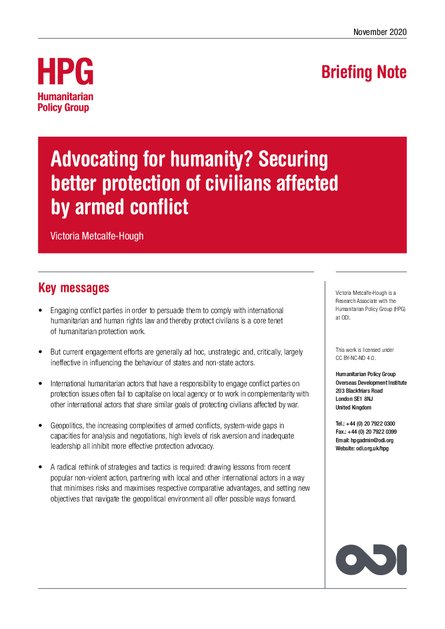
In 2020, more than 30 violent armed conflicts are raging across the world. Though they vary in duration, geographic spread and geopolitical impact, these conflicts are all characterised by one common factor: the devastating impact on the civilian population. More humanitarian actors are delivering more assistance and services to more people than ever before, so why are violations of international humanitarian law by state and non-state parties to conflict still so widespread and systematic? Why have humanitarians been unable to persuade conflict parties to stop attacks against, or incidental harm to, civilians?
This briefing note explores some of the key inhibitors to more impactful advocacy or engagement with conflict parties and third-party states on the protection of civilians affected by armed conflict.
